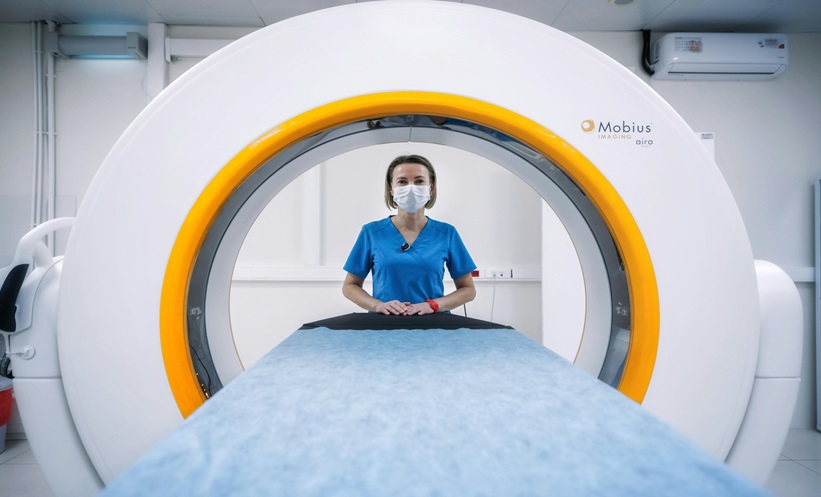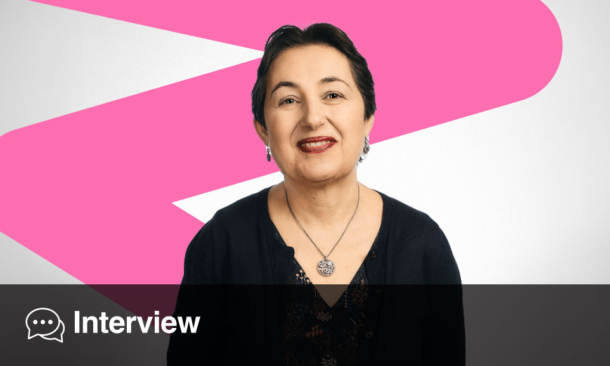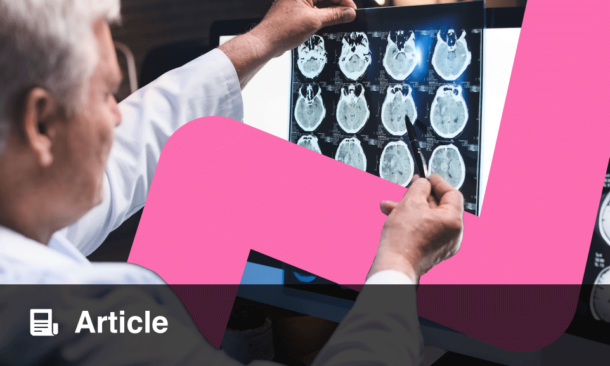Yaakov Stern | Florence Irving Professor of Neuropsychology, Departments of Neurology, Psychiatry, and Psychology, Columbia University Vagelos College of Physicians and Surgeons, New York, USA; Taub Institute for Research in Alzheimer’s Disease and the Aging Brain, and Gertrude H. Sergievsky Center, Columbia University, New York, USA.
Citation: Neurol AMJ. 2024;1[1]:46-52. https://doi.org/10.33590/neurolamj/GSLY6570.
![]()
After completing your BA in psychology, what inspired you to undertake a PhD exploring cognition in Parkinson’s disease, and subsequently focus your research on cognition in aging?
When I was doing my BA in psychology, I found myself more interested in the research side of the subject; a lot of people who were studying psychology wanted to be therapists, but that didn’t interest me as much as the research. So, I found this program called Experimental Cognition that was up at the City College of New York, USA. I applied, and truthfully, I really didn’t know a lot about what they were doing in the program. There were two things going on: there were people doing rat research, and then there were people doing something called neuropsychology. At that point, neuropsychology was a relatively new field, and I became very interested in it. I started to learn how to test patients.
In my second year or third year, they brought in a new professor, Jeff Rosen, to work with the graduate students that were interested in neuropsychology. Rosen told me that in Boston, his student had been working with Richard Mayeux, a neurologist who had done his residency at the Columbia University Irving Medical Center in New York. Now, he had just come back to New York, to Columbia University, as a new assistant professor. Rosen suggested that I meet with him, and we started working together. At that point, Mayeux was studying depression and Parkinson’s disease. I was good with statistics, and I offered to help him with his data, which included cognitive testing. I started to realize that while the people with mild Parkinson’s disease were well functioning, they had subtle cognitive deficits. That was a very new and controversial idea at the time, and it drove the studies that I did for my doctoral dissertation.
Mayeux and I continued studying Parkinson’s disease. And then, there was a point in time where the world began to realize that Alzheimer’s disease was very prevalent. Alzheimer had described dementia that is seen in younger people; and older people who had severe cognitive problems were not recognized as having Alzheimer’s disease. But suddenly, several investigators were showing that these people had amyloid plaques in their brain, and they had the same kinds of brain changes that Alzheimer’s had described. So, we were pushed by the field to move towards studying Alzheimer’s, and that research set me up for a lot of the work I did subsequently.
This was in the 1970s? It sounds like you were right at the forefront of all these major advancements.
It was; it’s hard to think of it now, because everyone recognizes Alzheimer’s disease not just as a prevalent disease, but as such an important one to research. However, when we started, Alzheimer’s disease was considered a very rare disease. Once it became clear that that was not the case, The National Institute on Aging (NIA), which supports research in the USA, started to push very hard for research in the area, because they realized that this was a major problem.
You have championed the cognitive reserve hypothesis to explain the individual differences in performance and deficits resulting from neuropathological insults. Can you give a brief overview of the hypothesis?
I first thought about cognitive research in the context of Alzheimer’s disease, where we know that there are underlying pathologies, including plaques and tangles caused by amyloid and tau. As these pathologies get worse, a person starts to have cognitive problems. The concept of cognitive reserve suggests that some people can cope with those pathologies better than others; you could have two people that could have the same amount of plaques and tangles, and one would have more cognitive issues than the other.
One observation that sparked my interest was made by Robert Katzman, who was very influential in publicizing the idea that Alzheimer’s was a prevalent disease. He was following elderly people over time and was doing autopsies on them when they died. He wrote a paper about 10 women who were cognitively normal while they were alive, but their autopsies found that they had a lot of amyloid in their brains, and he was wondering how that could be. What he speculated was that they had larger than average brains, and that somehow allowed them to cope with that pathology better. He called that brain reserve. That’s a concept that is still prevalent today, and there’s another related concept called brain maintenance, where some people maintain their brains better than others, allowing them to age more successfully. But I thought about it in a different way; I thought that maybe two people could have the same amount of Alzheimer’s pathology, and one could show less cognitive change than the other, because some aspect of their cognitive functioning in some way allowed them to cope with the pathology better. I did a few early studies confirming that idea, which I called cognitive reserve in contrast to Katzman’s brain reserve.
The concept of cognitive reserve suggests that, when people begin to develop Alzheimer’s pathology, some can cope with that pathology better than others. Similarly, even in normal aging, there are brain changes that occur throughout our lifetime. Those changes in the brain cause the cognitive changes seen in normal aging. In both normal aging and dementia, cognitive reserve moderates the impact of brain changes on cognitive changes.
How has research in this area developed over the course of your career?
You start with an idea. In the beginning, the goal was to try to firm up this concept. In the first paper I wrote on this topic I explored this idea: if you had two patients with Alzheimer’s disease who had the same level of cognitive and functional problems, and one had higher and the other had lower education, a proxy measure of cognitive reserve, the person with higher education should have more plaques and tangles in the brain. However, we didn’t have the kinds of autopsy studies that are quite common now to do that. We were doing a study of patients with Alzheimer’s disease where they were receiving a brain scan that measured the severity of their Alzheimer’s pathology. We matched patients for clinical severity and showed that the people with higher education had indication of more advanced pathology. So, this study showed that the patients with higher education could cope with Alzheimer’s disease pathology better. That was the first paper I published on this topic. We also tried to look at it in different ways, using epidemiologic approaches. One study showed that people with higher educational attainment had less risk of developing Alzheimer’s disease over time. Another showed that in healthy elders without dementia, those with higher education or IQ showed less cognitive decline over time. Once the concept was confirmed, then we started to ask questions such as: “How does it work?” and “What’s going on in the brain that allows some people to cope better than others with age-related changes or disease pathology?” It’s one thing to say that people with higher education or higher occupation do better, but what’s going on in their brains that allows them to do that?
This was right around the time when people started doing functional MRI (fMRI), a technique where you can actually look at the areas of the brain that are involved in that task and look at the degree to which those areas are used. I was very taken up with the idea that I could use fMRI to understand the neural implementation of cognitive research. That’s something that I’m still doing today. What’s fun about research is that one question leads to another.
What are the key take-home messages from the recent paper you co-authored entitled, ‘Brain reserve affects the expression of cognitive reserve networks?’
This is the other side of cognitive reserve. Cognitive reserve is a very hopeful concept; there are things that we do across the lifespan that can help us age more successfully and allow us to deal better with disease pathology, and it’s not just education and occupation, which I previously mentioned. Throughout the lifespan, there is a whole set of exposures that impact reserve: the environment we grow up in when we’re children, the kind of schools we go to, the kind of jobs we have, our leisure activities, and whether we exercise. So, it’s a very positive concept.
The truth is that you can have the most brilliant person, and if they develop severe Alzheimer’s disease pathology, they’re going to lose cognitive function. We have been able to show that they can cope with the pathology longer, and once they get it, they have Alzheimer’s for a shorter amount of time, because the disease is so severe that it progresses more rapidly. However, we have never done a study to understand how the brain changes that occur in normal aging, or Alzheimer’s disease, impact on the cognitive reserve networks themselves. So, this latest paper talks to the point that age- or disease-related brain changes can impact the cognitive reserve networks as well.
With over 700 publications, and four decades of experience, in your opinion, what are the unmet research needs that should be addressed to further understand cognition in normal aging and Alzheimer’s disease?
Any information just opens up new questions. I think that we understand cognitive aging quite well, but we still don’t understand it completely. Over time, there are new techniques, like fMRI, that you can use to study aging and dementia. But there are always new things that you can add into your research, and different questions to ask. There are now things we can do that we just couldn’t do before. When I first started, we didn’t know whether someone had pathology in their brain until they’d had an autopsy, but at some point, they developed PET scans and PET tracers that allow you to see whether someone had amyloid plaques or tangles in their brain during life. Those are the two big, bad actors in Alzheimer’s disease. Now there are also blood-based biomarkers. All of a sudden, we have gone from an extremely expensive PET scan to a relatively inexpensive blood test, which allows us to look at those kinds of pathologies and see the presence of them very easily. The field is expanding tremendously, and that opens up new research opportunities. Now, for example, we’re working with someone who can take blood and do what’s called exposomics. This allows you to get a record of any kind of pollution or any exposure someone has had to a bad chemical throughout their lifetime. We can then relate those measures to brain and cognitive changes. And I’m just touching the surface, there’s always more to do.
The other thing that I’ve been interested in for a very long time is the large variability in the presentation and course of Alzheimer’s disease. It’s quite typical for people to have a memory problem, although Alzheimer’s doesn’t always start that way. However, some people with Alzheimer’s disease also have what are called delusions; they have strange beliefs, like someone is stealing from them, whereas others don’t. Some people have sleep problems; some don’t. Some people have depression; some don’t. These differences in the disease presentation are associated with variability in how it progresses.
What is the Reference Ability Neural Network Study? What are the aims of this study, and what does your role as Director entail?
The Reference Ability Neural Network is aimed at better understanding the cognitive changes in normal aging. The term ‘reference ability’ is interesting. An investigator named Tim Salthouse examined multiple cognitive tests in elders followed over time and suggested that we could summarize cognitive aging into four domains: memory, reasoning, speed of processing, and vocabulary. He called these reference abilities. With fMRI, we can look at the networks underlying any cognitive task. I wondered whether we could do the same thing that Salthouse did using imaging: could we summarize cognitive changes, but on the imaging level? Salthouse showed that many memory tasks can be summarized into this one variable: can we take the imaging data from three memory tasks and find a common task-related activation pattern in the brain that underlies them? This would be a reference ability neural network. That’s the basis for the title of the project.
What it’s turned into over time is a large study of cognitive aging. We started with about 500 people aged 20 to 80 and have followed them. We have completed 5-year follow up, and now we’re doing a 10-year follow up. We do a lot of cognitive testing, but we also measure the structural changes in the brain. As we age, our brains shrink, and the white matter that connects things gets affected. There are all these things that we can measure with imaging.
I think the thing that many people don’t realize is that cognitive aging is not just something that happens in older people. We see changes in cognition and memory from ages 20‒25. This does not happen to everybody, but on average, people are getting a little worse over time. Because we have these longitudinal data, we can use our data to ask important questions about the causes of cognitive aging. It also helps us with our cognitive reserve studies as well, because it gives us a basis where we have 5- and now 10-year changes in the same people; we can see the changes in their brains in terms of atrophy and the like, or whether they’re developing Alzheimer’s pathology, and at the same time, we can see changes in cognition. What moderates those changes is the cognitive reserve question.
What are some of the non-pharmacological and preventative brain health interventions that can be implemented to help reduce the risk of developing cognitive impairment, or improve cognition as we age?
There is a lot of research that has been done, and there are some good answers to that question. It’s been quite clear that something like the Mediterranean diet is very helpful, and so is exercise. Both help to maintain the brain. Then, there is a whole set of variables, a lot of which I’ve spoken about previously. In younger people, the nature of their education and cognitively stimulating activities they were exposed to, contribute to successful aging. In older people, being active in some way is useful. This doesn’t mean taking a course in particle physics, but just being active, with whatever people enjoy doing. In middle age, the kind of work people do really makes a difference. Some work is more physical, and some is more interpersonal or cognitively demanding. Engaging with people and having social networks are also useful. There’s a whole set of things that seem to be very useful for promoting successful cognitive aging. I always try to be careful when I talk about this; doing all these things doesn’t mean I won’t get Alzheimer’s. If you do develop the disease, it is going to win at some point. However, there are a lot of people who die with some pathology but were never affected by the disease. The reserve puts off the onset of the disease.
Biomarkers for the diagnosis of cognitive disorders are becoming more prevalent. Are there any biomarkers in particular that you are excited to see utilized in the future?
We have biomarkers for Alzheimer’s changes, such as plaques and tangles, including amyloid and tau, as well as biomarkers for other aspects of the disease. This allows us, in a relatively inexpensive way, to understand to what degree cognitive changes are associated with those pathologies, as opposed to what I would call normal aging and the normal range of changes that occur in aging. So, that’s been very powerful. It has also changed the way people think about Alzheimer’s disease. With most diseases, you talk about the problem that you have in the body or brain; not the outcome of that problem. More recently, there have been proposals that Alzheimer’s disease should not be based on cognitive or functional changes, but whether people have amyloid and tau in the brain. But for me, I think it allows us to measure something that we just didn’t have before. And, as I mentioned, there are unbelievable amounts of things that now, with these blood-based measures you can look at, such as seeing all the chemicals people have been exposed to. There are others that give us hints about lifelong diet. There are several measures that use blood-based analyses to look at the rate of aging. There are just tremendous numbers of things you study.
The field of artificial intelligence (AI) has exploded in recent years. Do you think there is a role for it in predicting and identifying patients at risk of developing Alzheimer’s disease, or stratifying when patients are likely to develop certain behavioral, psychiatric, or cognitive features?
I think so. Statistics have become much more sophisticated and can really capture numerous variables. There are many kinds of analyses one can do, especially if you have a lot of data and a lot of people. This is very different from when I started. AI is another powerful way to deal with large amounts of information. It’s not a magic bullet; but I would not be surprised if, over a short amount of time, new and unique kinds of relationships are discovered with it. It’s just a matter of having the right data to evaluate.
Are you using AI currently?
No. I work with people who are using AI, and approaches close to AI for quite a while. Now, again, it’s a matter of having access to very, very large datasets. And then hopefully, you’ll discover something new.
To conclude, what are your hopes for the legacy of your work, and what direction would you like to see it taken in the future?
My work in cognitive reserve has been very satisfying. I think it’s an accepted concept. I’ve worked with people for a long time on coming up with consensus definitions for these types of concepts, and I think these are now built into people’s thinking about aging and dementia. When you start to do research, especially where I am at Columbia, where there are so many amazing researchers around, it’s sort of like being a kid in a candy shop; there are so many things going on, and so many new ideas. There are things that you really want to do, and there’s only so much time to do them. The kind of things we’re thinking about right now include approaches to perhaps imparting cognitive reserve in people. There’s a technique called transcranial magnetic stimulation, a way of stimulating the brain. Can we use that to modify existing brain networks in order to impart reserve?
The way that a researcher’s life, like mine, is set up is, you need grants to support projects, and then you need to make those projects work. In some ways, the legacy that you leave is the early ideas you helped promote and the papers that you write. Hopefully, those ideas and papers are useful to others in helping them design research that will make more contributions in the future.







